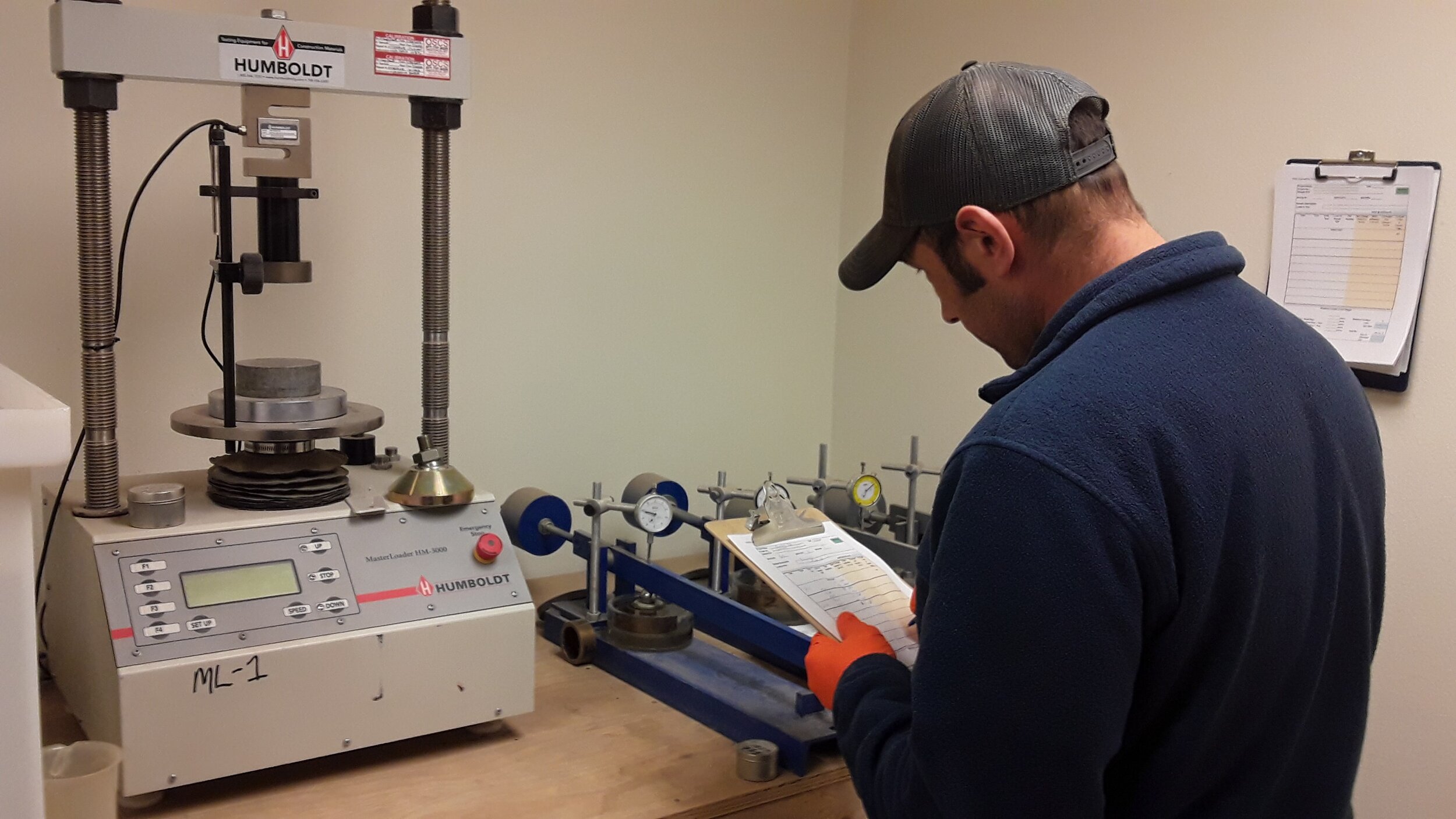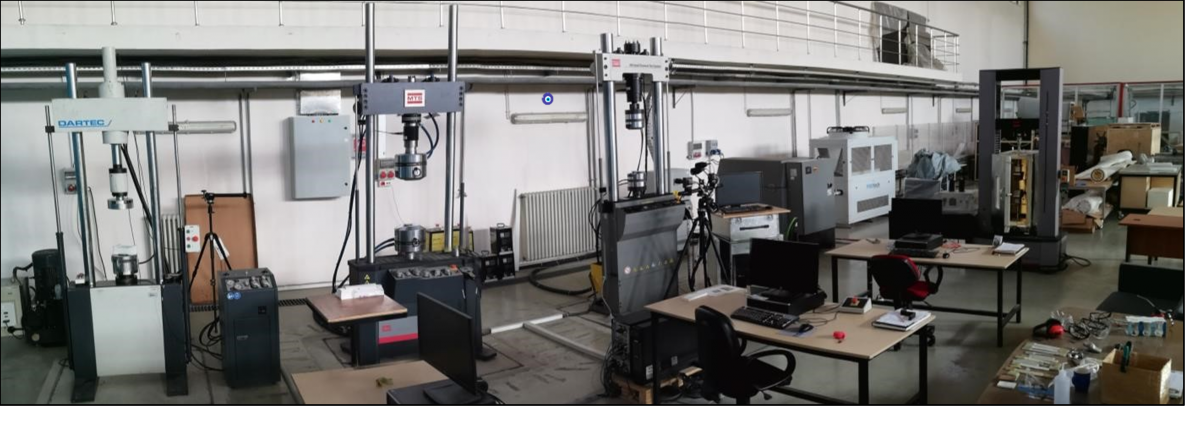Material Testing Lab Excellence: Introducing the Tricks to Task Longevity
Wiki Article
Introducing the Tricks of Materials: Developments in Modern Material Screening
In the ever-evolving globe of materials scientific research, researchers are continuously looking for methods to unlock the surprise keys of various substances. The quest to understand the homes, behavior, and possible applications of materials has led to amazing innovations in contemporary material testing. From nanotechnology and synthetic intelligence to non-destructive testing and high-throughput screening, new techniques are arising that guarantee to change our understanding of materials.Nanotechnology: Enhancing Product Checking Capabilities
Nanotechnology has changed product testing by boosting its abilities and enabling extraordinary precision and precision. With the capacity to manipulate and regulate products at the nanoscale, scientists and designers have had the ability to reveal brand-new understandings right into the behavior and buildings of different materials. This has actually opened an entire brand-new opportunity for product screening, allowing researchers to dive deeper right into the essential characteristics of materials and discover their prospective applications.Among the crucial advantages of nanotechnology in product screening is its capacity to give very exact dimensions. By using specialized nanoscale probes and sensors, researchers can acquire detailed details regarding a material's mechanical, electric, and thermal residential or commercial properties. This degree of precision is essential for sectors such as aerospace, automotive, and electronics, where also the smallest deviation from preferred specifications can have considerable consequences.
Additionally, nanotechnology has actually enabled the growth of unique screening techniques that were previously inconceivable. Scanning probe microscopy methods, such as atomic pressure microscopy and scanning tunneling microscopy, make it possible for researchers to imagine and manipulate products at the atomic degree. This unmatched degree of control and observation has led the way for breakthroughs in comprehending product habits and designing innovative products with customized residential properties.
Artificial Intelligence: Reinventing Product Evaluation
The integration of expert system has produced a transformation in material evaluation, dramatically improving the speed, precision, and efficiency of the process. With the capacity to examine vast amounts of data in real-time, man-made knowledge (AI) formulas can quickly recognize patterns, abnormalities, and correlations that could or else go undetected by human analysts. This makes it possible for scientists and scientists to acquire a much deeper understanding of products and their homes, causing the growth of improved and brand-new products for numerous applications.AI-powered product analysis likewise permits the prediction of material behavior under different conditions, saving significant time and sources in the screening phase. By simulating different circumstances, AI algorithms can properly anticipate exactly how products will certainly perform in various settings, making it possible for engineers to make educated choices regarding their viability for particular applications.
Moreover, AI formulas can enhance material screening processes by immediately changing specifications and experiment designs based upon real-time comments (material testing lab). This not only speeds up the screening process but likewise makes sure that the maximum amount of info is acquired from each experiment, resulting in more trustworthy and thorough outcomes

Non-Destructive Testing: Exploring Materials From Within
Non-destructive testing techniques supply a distinct method to explore the internal framework and homes of products without triggering any damages or change. These techniques have actually transformed the field of material screening by allowing researchers and engineers to take a look at products from within, without compromising their honesty. Non-destructive screening approaches use numerous modern technologies and methods to analyze products and provide valuable understandings into their composition, flaws, and performance.One commonly utilized non-destructive testing technique is ultrasonic useful link testing, which involves sending high-frequency acoustic waves with a material and evaluating the mirrored waves to determine its interior framework. This approach is generally utilized to identify defects, such as gaps or splits, in steels, compounds, and concrete. An additional method, referred to as X-ray radiography, uses X-rays to develop pictures of the interior functions of a product, making it specifically useful for examining welds and identifying hidden issues.
Various other non-destructive testing techniques consist of magnetic particle testing, which uses electromagnetic fields to recognize surface area and near-surface problems in ferromagnetic products, and swirl current testing, which makes use of electro-magnetic induction to discover problems in conductive materials. These techniques, together with others like thermography and visual assessment, provide useful info about the structural integrity and top quality of materials, ensuring their reliability and safety in various applications.
Non-destructive screening is especially crucial in industries such as aerospace, auto, power, and building, where the efficiency and integrity of products are of utmost importance. By enabling comprehensive material evaluation without causing damages or change, non-destructive testing strategies play a vital duty in ensuring the high quality and toughness of materials in a variety of applications.
High-Throughput Screening: Accelerating Product Exploration
High-throughput screening techniques have actually revolutionized the procedure of product exploration by speeding up the recognition and examination of new products. This strategy enables scientists to quickly evaluate a a great deal of materials, enabling the recognition of promising prospects for more investigation.High-throughput testing includes Learn More the usage of automated robotics and systems to carry out experiments widespread (material testing lab). This allows scientists to quickly check a large range of materials under different conditions, such as stress, temperature level, and make-up. By evaluating the resulting information, researchers can determine materials with wanted residential properties, such as high stamina, conductivity, or thermal stability
One of the key advantages of high-throughput screening is its ability to quicken the exploration of brand-new products with boosted properties. Traditional approaches of product exploration commonly include experimentation, which can be lengthy and inefficient. With high-throughput screening, scientists can methodically explore a substantial range of materials in a portion of the moment, substantially speeding up the exploration procedure.
Moreover, high-throughput screening can additionally offer valuable understandings into the underlying structure-property relationships of products. By testing a multitude of products with differing compositions and frameworks, researchers can better recognize exactly how various factors influence material properties. This knowledge can then be utilized to create and optimize materials with specific homes for numerous applications, such as energy storage, electronics, and healthcare.
Advanced Simulation Techniques: Predicting Material Efficiency
Advanced simulation techniques play an essential duty in forecasting the efficiency of products in numerous applications. These methods entail making use of computer designs and mathematical algorithms to replicate the habits of materials under various conditions. By imitating the habits of materials at the molecular and atomic degree, scientists can obtain valuable insights into their mechanical, thermal, and chemical buildings.Among the key benefits of innovative simulation strategies is their capacity to anticipate material efficiency prior to physical testing. This not only conserves time and sources yet likewise permits scientists to check out a larger series of products and design specifications. For instance, in the area of products design, simulations can assist recognize the optimal structure and structure of a product to achieve certain residential properties.

Along with predicting product efficiency, these simulation strategies additionally help in understanding the hidden mechanisms that regulate product actions. By analyzing the simulation results, scientists can acquire understandings into the fundamental principles that dictate the residential or commercial properties and performance of products.
Conclusion
In final thought, the advancements in product testing techniques have actually considerably enhanced our understanding and evaluation of numerous materials. Nanotechnology has actually enabled for enhanced capacities in testing and manipulating materials at the nanoscale. Non-destructive screening has allowed us to check out the inner properties of you could check here products without causing damages.The mission to understand the homes, behavior, and potential applications of products has actually led to amazing advancements in modern-day product screening. These techniques have actually revolutionized the area of product screening by making it possible for researchers and designers to check out products from within, without endangering their integrity. By evaluating a huge number of products with differing compositions and frameworks, scientists can better comprehend exactly how different factors influence product residential or commercial properties. In the field of materials layout, simulations can assist determine the optimal make-up and framework of a product to attain details residential properties.
In verdict, the improvements in material testing strategies have actually greatly boosted our understanding and analysis of different materials.
Report this wiki page